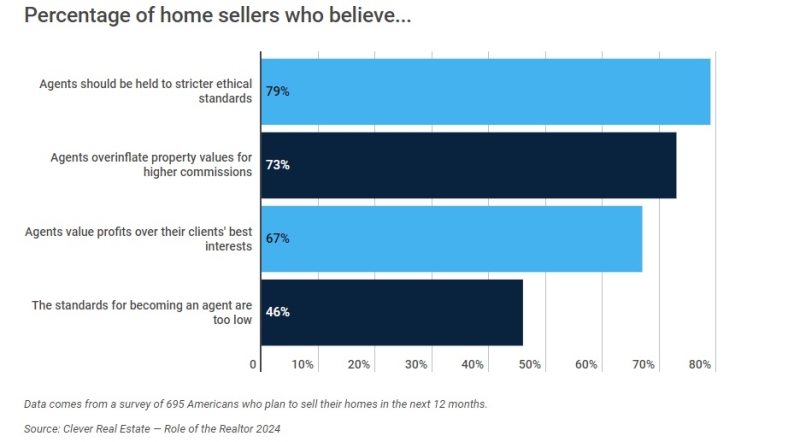Advertisement
Freddie Mac: The FRM World Goes Flat

It was a pretty flat week in average fixed mortgage rates, according to Freddie Mac’s Primary Mortgage Market Survey (PMMS) for the week ending June 5. But several mortgage industry leaders believe that the flat rates have little, if any, driving impact on the health of the housing market.
Freddie Mac reported that the 30-year fixed-rate mortgage (FRM) averaged 4.14 percent, with an average 0.5 point for the week ending June 5, up slightly from last week’s average of 4.12 percent. A year ago at this time, the 30-year FRM averaged 3.91 percent. Meanwhile, the 15-year FRM averaged 3.23 percent this week with an average 0.5 point, up from last week’s average of 3.21 percent. A year ago at this time, the 15-year FRM averaged 3.03 percent.
"Mortgage rates were little changed amid a week of light economic reports,” said Frank Nothaft, vice president and chief economist for Freddie Mac. “Of the few releases, real GDP was revised down to -1.0 percent growth in the first quarter of 2014. ADP Research Institute estimated the private sector added 179,000 jobs in May, which followed a slight downward revision of 5,000 jobs in April. Meanwhile, the Institute for Supply Management reported the manufacturing industry saw a slight acceleration in monthly growth for May."
The five-year Treasury-indexed hybrid adjustable-rate mortgage (ARM) averaged 2.93 percent this week with an average 0.4 point, down from last week when it averaged 2.96 percent. A year ago, the five-year ARM averaged 2.74 percent. Also last week, the one-year Treasury-indexed ARM averaged 2.40 percent this week with an average 0.4 point, down from last week when it averaged 2.41 percent. At this time last year, the one-year ARM averaged 2.58 percent.
For mortgage professionals, however, Freddie Mac’s data did little but reconfirm a disconnection between mortgage rates and other factors shaping the housing market.
“We’ve gone from 18 percent to three percent over the last 30 years, but we’re seeing more stress at three to four percent,” said Logan Mohtashami, Irvine, Calif.-based senior loan manager at AMC Lending Group and a financial blogger at LoganMohtashami.com. “There are more factors to housing than just rates. We don’t have enough qualified homebuyers. Housing prices were up 15 to 45 percent in the past two years. But when people say that declining rates will boost housing … that is not mathematically possible.”
Tommy A. Duncan, president of Brentwood, Tenn.-based Quality Mortgage Services LLC (QMS), does not see the hope for any organic uptick in rates as long as the American economy remains frayed.
“Mortgage rates will be based on the economy,” Duncan said. “I’ve heard the economy is getting better, but I’m not fully convinced. The national debt has increased so much that we’re at a point of wondering when the bubble is going to burst.”
Another expert in the field expressing concern over the bigger picture is Brian Coester, CEO of Rockville, Md.-based Coester Valuation Management Services.
“Rates will remain flat for the foreseeable future until we start seeing more mortgage-backed securities purchases and the private label market returns,” Coester predicted.
Secondary market issues also concerned Bob Dorsa, president of the American Credit Union Mortgage Association (ACUMA), who expressed trepidation that goes beyond interest rate fluctuation.
“Most of ACUMA's 280 large credit union mortgage lenders sell to the GSEs and the challenges moving forward seem to be tied to the housing recovery and housing inventory,” Dorsa said. “Credit unions are also working on compliance and how to deal with the QM, first and for most. Non-QM represents a possible silver lining for credit union production, but does open other regulatory issues.”
And at least one mortgage professional noted that low rates are as much a part of the mid-year protocol as cookouts and baseball games.
“Summer tends to be the doldrums for rates,” observed Grant Stern, president of Morningside Mortgage Corporation in Bay Harbor Islands, Fla. “Summer is moving season for families. Lenders tend to keep rates lower, and we will see this through the end of August.”
Stern added that there was no reason to believe that rates will be anything but flat for the immediate future. “There is nothing looming to change where the market is right now,” Stern said.
Yet at least one observer believed the current rate environment is beneficial to the housing landscape.
“These flat rates are definitely stimulating the housing market,” said Les R. Kramsky of the Marlboro, N.J.-headquartered Law Offices of Les R. Kramsky LLC. “In my real estate practice, I see more and more homeowners buying houses and applying for mortgages due to these historically low interest rates. Many of these people may not have been in the housing market to purchase a home, but are doing due to the low interest rates that are available.”
Kramsky added, “I am a bit surprised that interest rates have remained relatively the same. With the housing market rebounding—along with entering the real estate season in the spring—many expected rates to rise. However, despite expectations, mortgage rates continue to remain near the lowest levels in about a year.”
About the author





